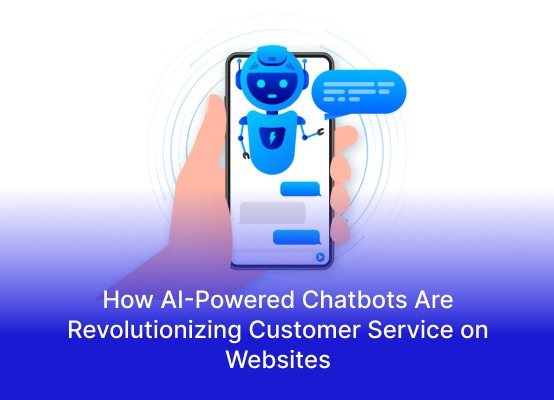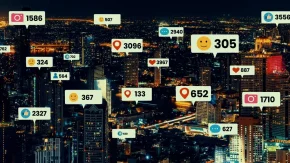Introduction
In 2025, chatbots are revolutionizing customer service across industries, from tech support to healthcare. Powered by artificial intelligence (AI) and machine learning (ML), these digital assistants are transforming how businesses interact with their customers. With increasing demand for 24/7 support, instant responses, and personalized interactions, chatbots have become indispensable tools for improving efficiency, reducing operational costs, and enhancing the overall customer experience.
1. Chatbots for Instant and Efficient Customer Support
Gone are the days of waiting on hold for customer support. Chatbots are providing instant responses to customer queries, offering real-time assistance across websites, apps, and messaging platforms. Whether a customer has a question about a product, needs troubleshooting help, or simply wants more information, chatbots are stepping in to provide immediate support.
AI-powered platforms like Drift and Intercom allow businesses to set up automated responses that provide relevant answers to common questions, ensuring customers receive the help they need instantly.
2. Reducing Customer Service Costs
For businesses, customer service costs can be significant, especially when handling a high volume of requests. Chatbots help reduce these costs by automating a variety of tasks. Instead of needing an agent to answer every single question, chatbots take over the repetitive tasks—like responding to frequently asked questions, checking account details, or processing simple requests—leaving human agents free to handle more complex or sensitive issues.
For instance, Zendesk uses a chatbot to automatically assist customers with common queries, reducing the workload on support teams and lowering operational costs.
3. Personalized Customer Interactions at Scale
One of the standout features of AI chatbots is their ability to offer personalized customer experiences. By analyzing customer data such as purchase history, preferences, and behavior patterns, chatbots can customize interactions to fit each individual’s needs.
For example, chatbots can recommend articles, guide users through troubleshooting steps, or even suggest products based on a customer’s previous interactions. This level of personalization—typically only achievable by human agents—can be scaled with chatbots, improving the customer experience while reducing the need for human intervention.
4. Proactive Engagement and Problem Resolution
Unlike traditional customer service, which is typically reactive, chatbots enable proactive engagement. Chatbots can initiate conversations with customers, offering assistance before a customer even has to ask. For instance, if a user is having trouble navigating a website or filling out a form, a chatbot can pop up and offer guidance.
This proactive approach helps in resolving issues before they escalate and can even prevent potential complaints or negative reviews. With chatbots, businesses can ensure a more seamless customer experience by anticipating customer needs.
5. Enhancing Multi-Channel Support
Customers expect to be able to reach businesses through multiple channels—be it via chat on websites, social media, email, or SMS. Chatbots support this by offering consistent and integrated support across multiple communication platforms. By integrating with tools like Facebook Messenger, WhatsApp, and Slack, businesses can offer a unified experience no matter where the customer is.
This omnichannel support helps ensure that customers can reach businesses in the way that suits them best, without sacrificing the quality of support they receive.
6. Advanced AI and Natural Language Processing (NLP)
Chatbots have come a long way in terms of their language understanding capabilities. Natural Language Processing (NLP) allows chatbots to understand, interpret, and respond to human language in a way that feels natural and intuitive. In 2025, NLP technologies are more advanced than ever, enabling chatbots to not only handle basic inquiries but also understand complex questions and provide meaningful responses.
Platforms like Google Dialogflow and IBM Watson offer NLP solutions that help chatbots recognize context, intent, and even sentiment, improving the overall quality of interactions.
7. Seamless Integration with Human Agents
While chatbots handle routine tasks, there are still situations where human intervention is necessary. A well-designed chatbot seamlessly integrates with human agents, escalating complex issues to the right person when needed. This ensures that customers receive the best possible assistance without the need for them to repeat themselves or get frustrated with the process.
For example, if a chatbot cannot resolve a customer’s issue, it can smoothly transfer the conversation to a live agent while retaining the context of the conversation, so the customer doesn’t have to start over. This hybrid approach helps provide the best of both worlds: automation and human expertise.
8. Handling High-Traffic Periods
During periods of high demand—such as holidays, product launches, or special events—customer service can quickly become overwhelmed. Chatbots can handle spikes in traffic by engaging customers and addressing inquiries en masse, without compromising the quality of service.
For instance, during Black Friday or Cyber Monday sales, chatbots can respond to a large volume of customer queries, leaving human agents available for high-priority matters. This not only ensures timely support but also prevents long wait times for customers.
Conclusion
In 2025, chatbots are revolutionizing customer service by offering instant, personalized, and cost-effective support across multiple channels. As AI and NLP technologies continue to evolve, chatbots will become even more sophisticated, providing businesses with the tools they need to deliver exceptional customer experiences at scale.
For businesses looking to stay competitive and provide top-tier support, integrating chatbots is no longer an option but a necessity. If you haven’t embraced this technology yet, now is the time to explore how chatbots can transform your customer service operations.


















